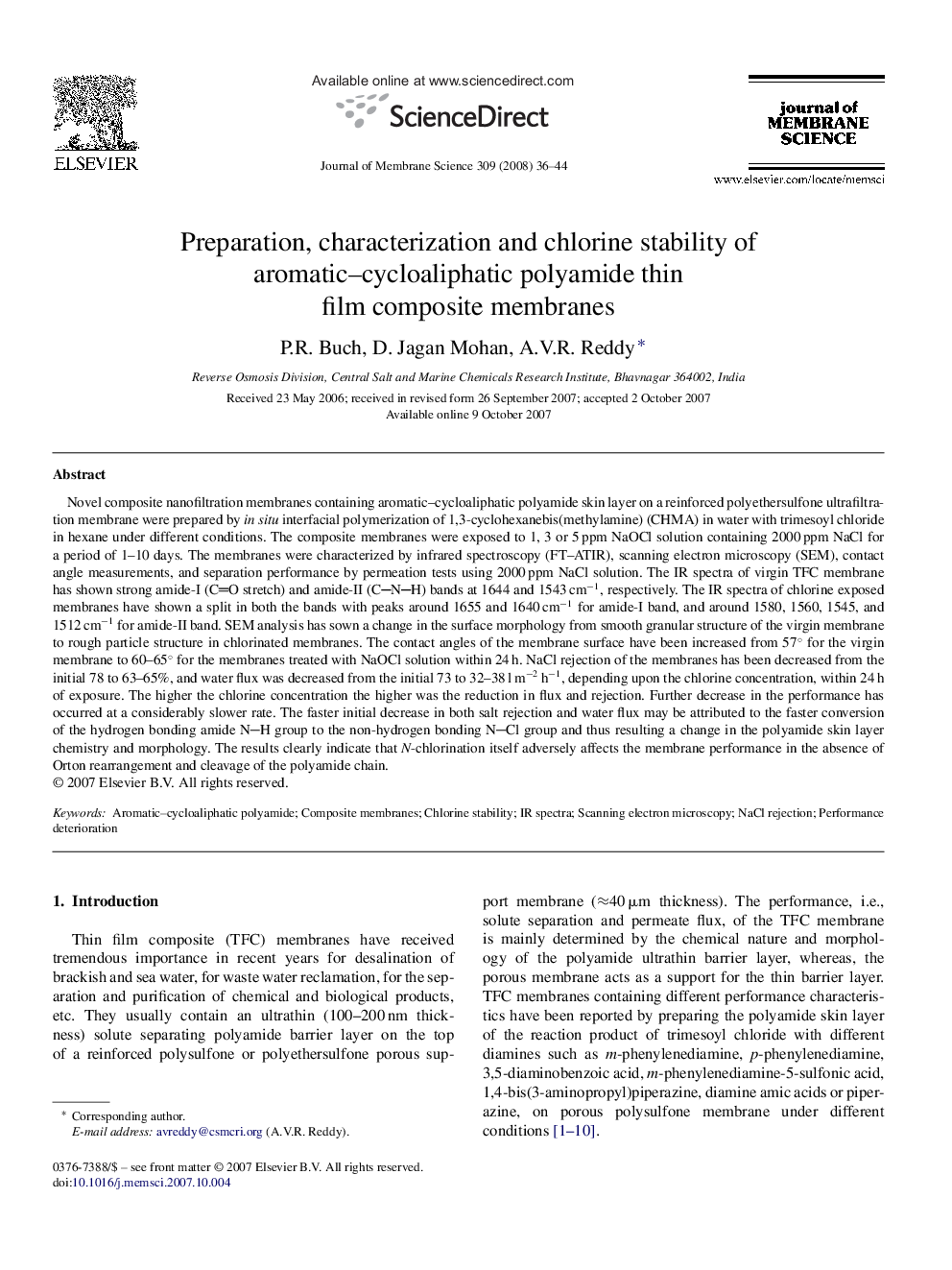| کد مقاله | کد نشریه | سال انتشار | مقاله انگلیسی | نسخه تمام متن |
|---|---|---|---|---|
| 638242 | 1456164 | 2008 | 9 صفحه PDF | دانلود رایگان |

Novel composite nanofiltration membranes containing aromatic–cycloaliphatic polyamide skin layer on a reinforced polyethersulfone ultrafiltration membrane were prepared by in situ interfacial polymerization of 1,3-cyclohexanebis(methylamine) (CHMA) in water with trimesoyl chloride in hexane under different conditions. The composite membranes were exposed to 1, 3 or 5 ppm NaOCl solution containing 2000 ppm NaCl for a period of 1–10 days. The membranes were characterized by infrared spectroscopy (FT–ATIR), scanning electron microscopy (SEM), contact angle measurements, and separation performance by permeation tests using 2000 ppm NaCl solution. The IR spectra of virgin TFC membrane has shown strong amide-I (CO stretch) and amide-II (CNH) bands at 1644 and 1543 cm−1, respectively. The IR spectra of chlorine exposed membranes have shown a split in both the bands with peaks around 1655 and 1640 cm−1 for amide-I band, and around 1580, 1560, 1545, and 1512 cm−1 for amide-II band. SEM analysis has sown a change in the surface morphology from smooth granular structure of the virgin membrane to rough particle structure in chlorinated membranes. The contact angles of the membrane surface have been increased from 57° for the virgin membrane to 60–65° for the membranes treated with NaOCl solution within 24 h. NaCl rejection of the membranes has been decreased from the initial 78 to 63–65%, and water flux was decreased from the initial 73 to 32–38 l m−2 h−1, depending upon the chlorine concentration, within 24 h of exposure. The higher the chlorine concentration the higher was the reduction in flux and rejection. Further decrease in the performance has occurred at a considerably slower rate. The faster initial decrease in both salt rejection and water flux may be attributed to the faster conversion of the hydrogen bonding amide NH group to the non-hydrogen bonding NCl group and thus resulting a change in the polyamide skin layer chemistry and morphology. The results clearly indicate that N-chlorination itself adversely affects the membrane performance in the absence of Orton rearrangement and cleavage of the polyamide chain.
Journal: Journal of Membrane Science - Volume 309, Issues 1–2, 15 February 2008, Pages 36–44